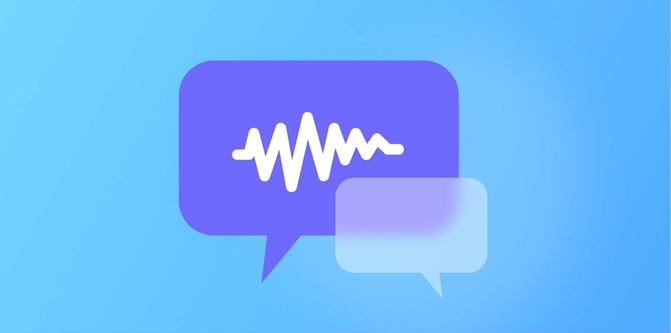Augmented Intelligence: Where AI and the Future of Work Intersect

Augmented intelligence or artificial intelligence? Turns out, the future needs both.
A lot has changed in the last few months. Chatbots and AI are everywhere, workflows have changed, and there are newly invigorated automation fears. Well, turns out, the secret to a healthy relationship with AI involves using it to your advantage to augment your abilities and inform your decision-making.
Let me show you what I mean.
What is Augmented Intelligence?
Augmented Intelligence is a form of artificial intelligence that goes beyond just replacing human capabilities. Instead, it seeks to enhance human potential by working in tandem with human intelligence.
Unlike conventional AI, which aims to surpass human abilities, augmented intelligence is specifically designed to complement and elevate human cognition. It’s an approach that keeps technology human-centric.
Interestingly, the concept of augmented intelligence isn’t new. It goes as far back as many of our modern automation fears. In 1960, Joseph Carl Robnett Licklider, a computer scientist and psychologist, explored the idea in his paper titled "Man-Computer-Symbiosis." Licklider envisioned a future where technology would accelerate human innovation and creativity, fostering a symbiotic relationship between humans and machines. I think we’re arrived there, Mr. Licklider.
In recent times, though, the conversation around augmented and artificial intelligence has resurfaced, especially spurred by the profound changes in the professional landscape. Work, quite simply, is changing. The COVID-19 pandemic prompted a swift shift to online and asynchronous work. And even more recently, easy-to-reach artificial intelligence and chatbots have revolutionized productivity by automating mundane tasks and streamlining workflows.
However, this progress has not been without its concerns. Here at Collato, we carefully consider how technology and humanity intersect. Augmented intelligence emerges as a crucial intermediary between artificial intelligence and machine learning, offering a human-centric vision for the future of work. Its core objective is to empower individuals with technology that enhances their abilities, resulting in a more effortless and productive life. (And, you know, more productive and efficient workdays, too 😉).
Augmented Intelligence vs. artificial intelligence
AI vs. AI. That sounds like a million-dollar movie idea.
Augmented intelligence is a branch of artificial intelligence. But in reality, they have completely different purposes. Artificial intelligence aims to create machines that think or act like humans. This is done through machine learning and natural language processing. Augmented intelligence, on the other hand, is meant to enhance human performance or capability. Augmented intelligence will never “replace humans” because its entire goal is to aid humans and work alongside us. Augmented intelligence acknowledges that technology isn’t going anywhere, and we should learn how to use it at work and at home to make our lives easier.
Where is augmented intelligence used?
A few examples of augmented intelligence are real-time translator applications like Google Translate, digital assistants like Alexa or Siri, and even shipping logistics and tracking. All of these technologies are really complex, but their main goal is to make your life better.
But really, augmented intelligence is used everywhere and for tons of uses. These run from incredibly important and technical, like IBM Watson’s cancer detection and various types of robotics employed in healthcare.
Examples of augmented intelligence applications in various sectors offer a glimpse of its immense potential:
- In healthcare, AI assists doctors in diagnosing diseases, recommending treatments, and monitoring patient progress.
- The finance industry harnesses augmented intelligence for investment decisions, risk management, and fraud detection.
- In engineering and manufacturing, augmented intelligence helps to design products, optimize production processes, and troubleshoot problems.
- Logistics also benefits from AI by managing transportation networks, tracking shipments, and optimizing delivery routes.
But we’ll see a lot more of these cases as more and more companies and products utilize machine learning and artificial intelligence. Humans will continue to do what we’ve done since the very beginning of our relationship with technology, too.
How is augmented intelligence useful in decision-making?
Augmented intelligence is useful in decision-making in a number of ways. It can:
- Provide real-time information and insights: Augmented intelligence from a variety of sources, including data, sensors, and other people. This can help them to make more informed and timely decisions.
- Identify patterns and trends: It can also identify things that would be difficult or impossible for humans to see. This can help decision-makers to make better predictions about the future and to identify opportunities and threats.
- Generate recommendations: Augmented intelligence can also generate recommendations based on preferences and available data. This can help them to save time and effort and to make better decisions.
- Automate tasks: It can also automate tasks that are repetitive or time-consuming. This can free up decision-makers to focus on more strategic and value-added activities.
Decision-making, the Future of Work, and technology will continue to intersect at an increasing rate in the near future. Technology is making decision-making more complex by allowing us to analyze new patterns and behaviors, but it is also providing us with new tools to make better decisions too.
How is augmented intelligence part of the future of work?
The principles of New Work resonate well with the vision of augmented intelligence, where self-organization, positive leadership, and agility play vital roles. Informed decision-making, human-first workplaces, and the responsible use of artificial intelligence are all tenets of augmented intelligence.
The essence of augmented intelligence lies in its collaboration with humans, where decisions are not only informed but also aligned with human values. This human-AI partnership safeguards against over-reliance on technology, ensuring ethical considerations remain at the forefront of workplace practices, too. Win-win.
How you can use Collato for augmented intelligence
Collato uses augmented intelligence to help you find the information you need, instantly. Collato’s AI-powered Slack assistant can understand natural language prompts and return relevant results from your team’s files, Google Docs, Confluence, Jira, and Notion.
Here are some specific examples of how Collato uses augmented intelligence:
- Reduced search time: Collato’s AI can understand natural language queries and return relevant responses from your information scattered across all your tools, which can reduce the time it takes to find the information you need.
- Document summarization: The AI assistant can generate summaries of documents, which can help users quickly understand the key points of a document. This is especially useful for long or complex documents.
- Improved decision-making: By providing users with access to the right information at the right time, augmented intelligence can help users make better decisions.
Increased productivity: By reducing the time it takes to find information and make decisions, augmented intelligence can help users be more productive.




